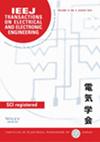求助PDF
{"title":"Image Analysis Method of Substation Equipment Status Based on Cross-Modal Learning","authors":"Zhuyun Li, Osamu Yoshie, Hao Wu, Xiaoming Mai, Yingyi Yang, Xian Qu","doi":"10.1002/tee.24111","DOIUrl":null,"url":null,"abstract":"<p>In response to increasing power supply needs, maintaining stable substations is vital for reliable electricity. Traditional manual equipment inspections in these substations are inefficient and risky, often leading to hazards and delayed detection of faults. Therefore, there's a growing shift towards using intelligent image recognition technology in video surveillance systems for safer and more efficient inspections. This paper focuses on enhancing the level of intelligent inspection in substations using artificial intelligence-based visual recognition technology. It introduces a novel small-sample classification algorithm based on the CLIP architecture. This method uses cross-modal equipment status information as additional training samples, optimizing the loss function together with image samples, and devises hand-crafted strategies for text sample inputs to distinguish between equipment and states. The experimental results show that with only 16 training samples per category for 21 types of electrical equipment states, our method achieved a maximum accuracy of 93.38%. This represents a 2.98% higher accuracy than the PPLCNet trained on the full dataset and an 8.63% higher accuracy than the PPLCNet trained with an equal number of samples, with significantly reduced training time. © 2024 Institute of Electrical Engineers of Japan and Wiley Periodicals LLC.</p>","PeriodicalId":13435,"journal":{"name":"IEEJ Transactions on Electrical and Electronic Engineering","volume":"19 9","pages":"1507-1521"},"PeriodicalIF":1.0000,"publicationDate":"2024-06-24","publicationTypes":"Journal Article","fieldsOfStudy":null,"isOpenAccess":false,"openAccessPdf":"","citationCount":"0","resultStr":null,"platform":"Semanticscholar","paperid":null,"PeriodicalName":"IEEJ Transactions on Electrical and Electronic Engineering","FirstCategoryId":"5","ListUrlMain":"https://onlinelibrary.wiley.com/doi/10.1002/tee.24111","RegionNum":4,"RegionCategory":"工程技术","ArticlePicture":[],"TitleCN":null,"AbstractTextCN":null,"PMCID":null,"EPubDate":"","PubModel":"","JCR":"Q4","JCRName":"ENGINEERING, ELECTRICAL & ELECTRONIC","Score":null,"Total":0}
引用次数: 0
引用
批量引用
Abstract
In response to increasing power supply needs, maintaining stable substations is vital for reliable electricity. Traditional manual equipment inspections in these substations are inefficient and risky, often leading to hazards and delayed detection of faults. Therefore, there's a growing shift towards using intelligent image recognition technology in video surveillance systems for safer and more efficient inspections. This paper focuses on enhancing the level of intelligent inspection in substations using artificial intelligence-based visual recognition technology. It introduces a novel small-sample classification algorithm based on the CLIP architecture. This method uses cross-modal equipment status information as additional training samples, optimizing the loss function together with image samples, and devises hand-crafted strategies for text sample inputs to distinguish between equipment and states. The experimental results show that with only 16 training samples per category for 21 types of electrical equipment states, our method achieved a maximum accuracy of 93.38%. This represents a 2.98% higher accuracy than the PPLCNet trained on the full dataset and an 8.63% higher accuracy than the PPLCNet trained with an equal number of samples, with significantly reduced training time. © 2024 Institute of Electrical Engineers of Japan and Wiley Periodicals LLC.
基于跨模态学习的变电站设备状态图像分析方法
为满足日益增长的供电需求,保持变电站的稳定对于可靠供电至关重要。在这些变电站中,传统的人工设备检查效率低、风险大,往往会导致危险和故障检测不及时。因此,人们越来越倾向于在视频监控系统中使用智能图像识别技术,以实现更安全、更高效的检查。本文的重点是利用基于人工智能的视觉识别技术提高变电站的智能巡检水平。它介绍了一种基于 CLIP 架构的新型小样本分类算法。该方法使用跨模态设备状态信息作为额外的训练样本,与图像样本一起优化损失函数,并为文本样本输入设计了手工创建的策略,以区分设备和状态。实验结果表明,在 21 种电气设备状态下,每个类别只需 16 个训练样本,我们的方法就能达到 93.38% 的最高准确率。这比在完整数据集上训练的 PPLCNet 的准确率高出 2.98%,比在相同样本数下训练的 PPLCNet 的准确率高出 8.63%,而且大大缩短了训练时间。© 2024 日本电气工程师学会和 Wiley Periodicals LLC。
本文章由计算机程序翻译,如有差异,请以英文原文为准。

 求助内容:
求助内容: 应助结果提醒方式:
应助结果提醒方式:


